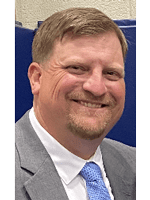As the energy sector closes the doors on 2024, FUTURECOAL, the Global Alliance for Sustainable Coal, released its Roadmap for a Sustainable Coal Value Chain that shares the group’s new vision and mission for coal as a viable energy source of the future. While the report outlines the importance of coal in the evolving energy landscape, it focuses on the decarbonization of coal to further its capabilities in a clean energy society.
Coal has carried a dirty perception as the clean energy world has grown in popularity and acceptance. As the industry embraces alternative forms of energy to further fuel the transition from fossil fuels, the primary perquisite comes in the form of decarbonization. With modern technologies at hand, FUTURECOAL’s report depicts data that shows promise with potential emission reductions made possible by transforming the dependency on subcritical plants to USC technology through efficiency measures. These measures concentrate on enhancing the coal-fired plant performance.
According to the report, data was derived from analyzing coal power fleets throughout 52 different countries. With each falling within multiple stages of economic development, they subscribe to differing technological strategies. Improvement potential ranges from one to four percent depending on the modifications made.
The first improvement examined includes improving the flow path of steam. An average rate of efficiency resulted in a savings directed at the per tonne cost of CO2. These minor enhancements produced higher gains than what are normally found in other upgrade solutions.
Another three percent of efficiency gains were found in adding a double reheat steam system to bypass cooling can also enhance efficiency by an additional three percent. Recycling steam purposed for reheating and better managing steam effectively, which also contributed to that efficiency increase.
Adding a double reheat steam system to bypass cooling, recycle steam for reheating, and managing steam effectively can enhance efficiency by 3%.
The report depicts another four percent increase in efficiency through high-temperature retrofitting USC components through steam upgrades. This is based on historical data that revealed existing USC plants use double reheating and other strategies on a minimal basis. Success can be enjoyed through a combination of multiple solutions.
The report focused on modification capabilities directed at existing plants. Although a new USC can realize 49 percent in efficiency gains, FUTURECOAL analysts indicate they require a significant uptick in capital expenditure spending. Still, upgrading proves the better route in gaining efficiency in a more economical fashion. The report proposed the upgrades to coal utilizing existing infrastructure could outweigh new fuel pipeline needed for a CCGT plant.
According to the report, CCS and co-firing with carbon free fuels based on hydrogen represent the most significant cuts and remain in early decarbonization stages. Increased interest direct at CCS as well as in domestic policy incentives surfaced and are growing in popularity with their cost reduction and the success of capture systems and as a more creative methodology “decarbonize an economy from regulators and treasury departments.”
According to the FC analysis, if the coal fleet were to be upgraded or even replaced with USC technology, a reduction from 925 gCO2/kWh to 709 gCO2/kWh in emissions factor could potentially be realized by the global fleet. By implementing CCS on only 50 percent of the world’s coal units could be that of a gas Combined Cycle Gas Turbine (CCGT).
The analysis additionally notes that investing in advanced coal solutions would demand less land-use as opposed to replacing the same Twh of electricity from sources like greenfield solar, wind, and battery storage. Still, analysts acknowledge the need for these energy sources, but in a careful balance.
Overall, FUTURECOAL’s report points to enormous opportunities can be found in the efforts to fully decarbonize col plants using CCS for the majority of units while refueling others with ammonia, sustainable biomass, and the addition of confirmed carbon offsets. The scope and range for plant operators to contribute to a diverse and decarbonized energy strategy is front and center.
Along with the growing need to meet an increase in energy demand, a clean and efficient blueprint is needed for a sustainable future. Coal power has been a staple in energy production and its use can be furthered by subscribing to the innovative solutions outlined in FUTURECOAL’s report. Seldom does a solution present itself with the yields paralleled economic gains while also subscribing to the clean energy standards that continue to grow in demand.
Nick Vaccaro is a freelance writer and photographer. In addition to providing technical writing services, he is an HSE consultant in the oil and gas industry with twelve years of experience. Vaccaro also contributes to SHALE Oil and Gas Business Magazine, American Oil and Gas Investor, Oil and Gas Investor, Energies Magazine and Louisiana Sportsman Magazine. He has a BA in photojournalism from Loyola University and resides in the New Orleans area. Vaccaro can be reached at 985-966-0957 or nav@vaccarogroupllc.com.






